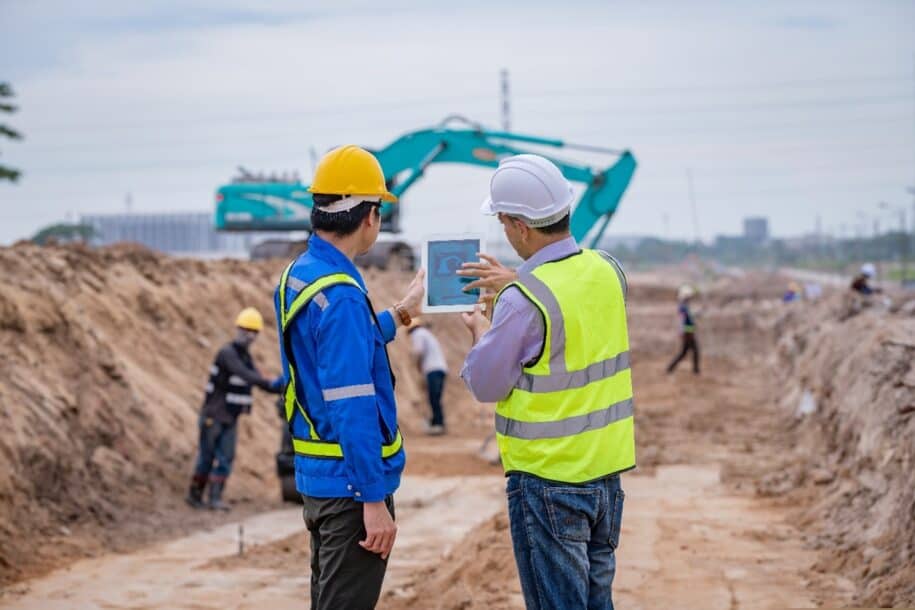Whether voluntarily or not, companies will often have to conduct some form of worksite safety inspection. In its most simplified form, the process of performing a safety inspection involves observing and recording any unsafe behaviors, conditions, or hazardous situations that have the potential to lead to injuries. Although safety inspections and observations should be and are undertaken routinely in most worksites, there is often little to no structure or guidance beyond completing a checklist and passing it on to the proper authority (i.e., safety manager, industrial hygienist, regulatory agency, etc.). Provided here is a Safety Observation Blueprint, outlining a systematic approach that organizations can use to identify, assess, and control risks in the workplace.
The information gathered during the safety observation process is used to develop proactive safety measures. Proactive safety measures are those that are designed to make work safer to reduce the likelihood that incidents will occur and include hazard prevention strategies, training, awareness bulletins and posters, investigative teams, and safety policies. These efforts all work together in helping to prevent accidents and protect workers from harm.
The safety observation process typically involves several steps.
The first step is education. Workers must be trained on the proper methods for conducting safety observations and what scenarios/facets of the work they should be looking for. To handle this step of establishing a safety observation program, training on hazard recognition, risk assessment, and reporting procedures could be introduced. From this learning, workers should also be able to understand the importance of safety observations and the role they will be actively playing in preventing accidents and injuries for themselves and their coworkers.
The second step is to identify potential hazards that are present in the workplace. This may entail hazards related to machinery, equipment, materials, and the physical environment. Hazard recognition and control is a vital part of a robust safety management system.
The third step is to establish a system for reporting and documenting safety observations. Providing workers with manual forms or checklists that they can use to record observations is one way of handling this step. Organizations could also invest in and implement an electronic system for capturing and tracking safety data. Either way, operating from a template checklist will aid in driving consistency and improving trend analysis.
Once workers have been trained, the next step is performing safety observations and inspections. It is important to note that this is not the final step in the process. Conducting safety observations means actively looking for unsafe conditions or behaviors and documenting them. Observations may be documented by workers, supervisors, or safety professionals, depending on the organization’s structure and policies.
Now that the safety observations have been recorded, the following step is to analyze the data and identify trends or patterns. When current observations are compared to past records, commonalities can often be found, pinpointing repeat incidents, hazards, or areas where workers may need additional training or support. Once the data analysis has been carried out, the organization can create targeted strategies to address any identified issues. Ideally, a comprehensive data action plan is developed to ensure this information is reviewed at periodic intervals to find actionable insights (such as ways the strategy may be outdated and means of improvement).
The final step in this Safety Observation Blueprint is to implement the action plans for mitigating any identified hazards or risks. Developing new policies or procedures, providing additional training, or making physical changes to the work environment could all be necessary to effectively control work safety. As mentioned in the previous step, these corrective actions should be regularly reviewed to ensure that they are being carried out correctly and working as intended.
While this Safety Observation Blueprint is a suggestion for the process that has been generalized for cross-industry applicability, adapting a safety observation and inspection process specific to an organization’s individual needs and structure is critical to identify and mitigate risks in the workplace. By establishing a systematic approach to safety observations, organizations can create a safer work environment for their employees, prevent accidents and injuries, and ensure compliance with safety regulations.
AUTHOR BIO:-

Cary comes to the SafetyStratus team as the Vice President of Operations with almost 30 years of experience in several different industries. He began his career in the United States Navy’s nuclear power program. From there he transitioned into the public sector as an Environmental, Health & Safety Manager in the utility industry. After almost thirteen years, he transitioned into the construction sector as a Safety Director at a large, international construction company. Most recently he held the position of Manager of Professional Services at a safety software company, overseeing the customer success, implementation, and process consulting aspects of the services team.
At SafetyStratus, he is focused on helping achieve the company’s vision of “Saving lives and the environment by successfully integrating knowledgeable people, sustainable processes, and unparalleled technology”.


